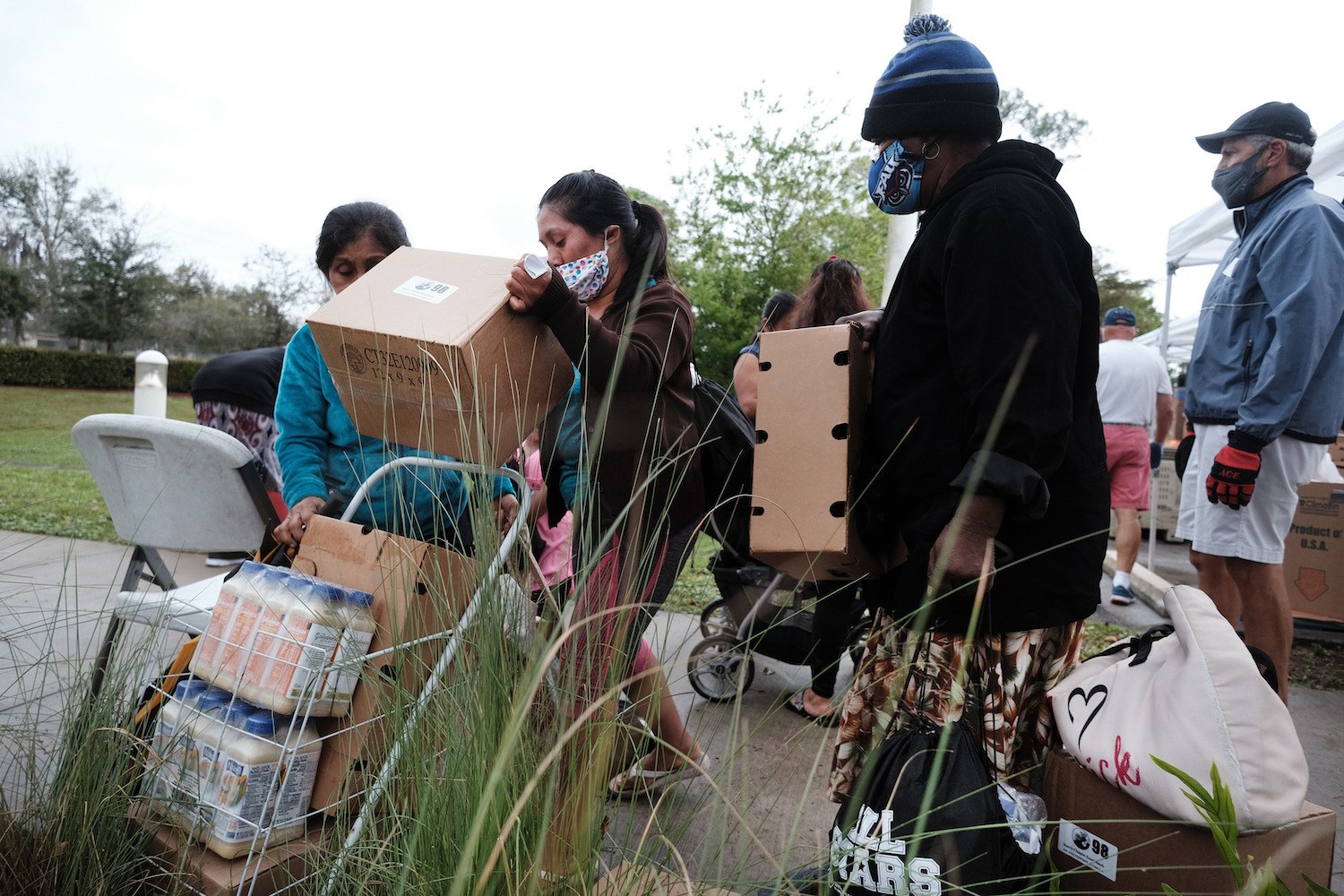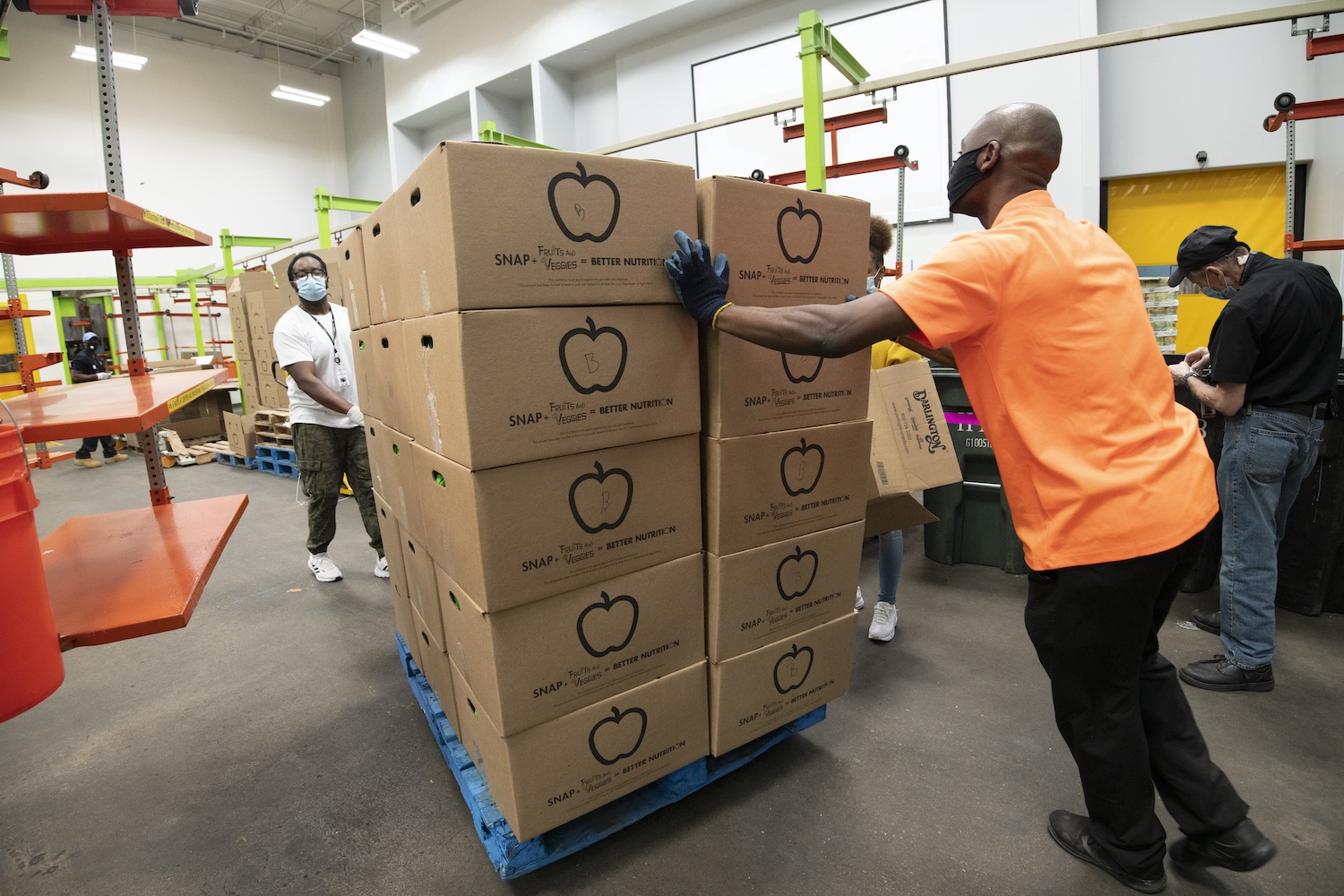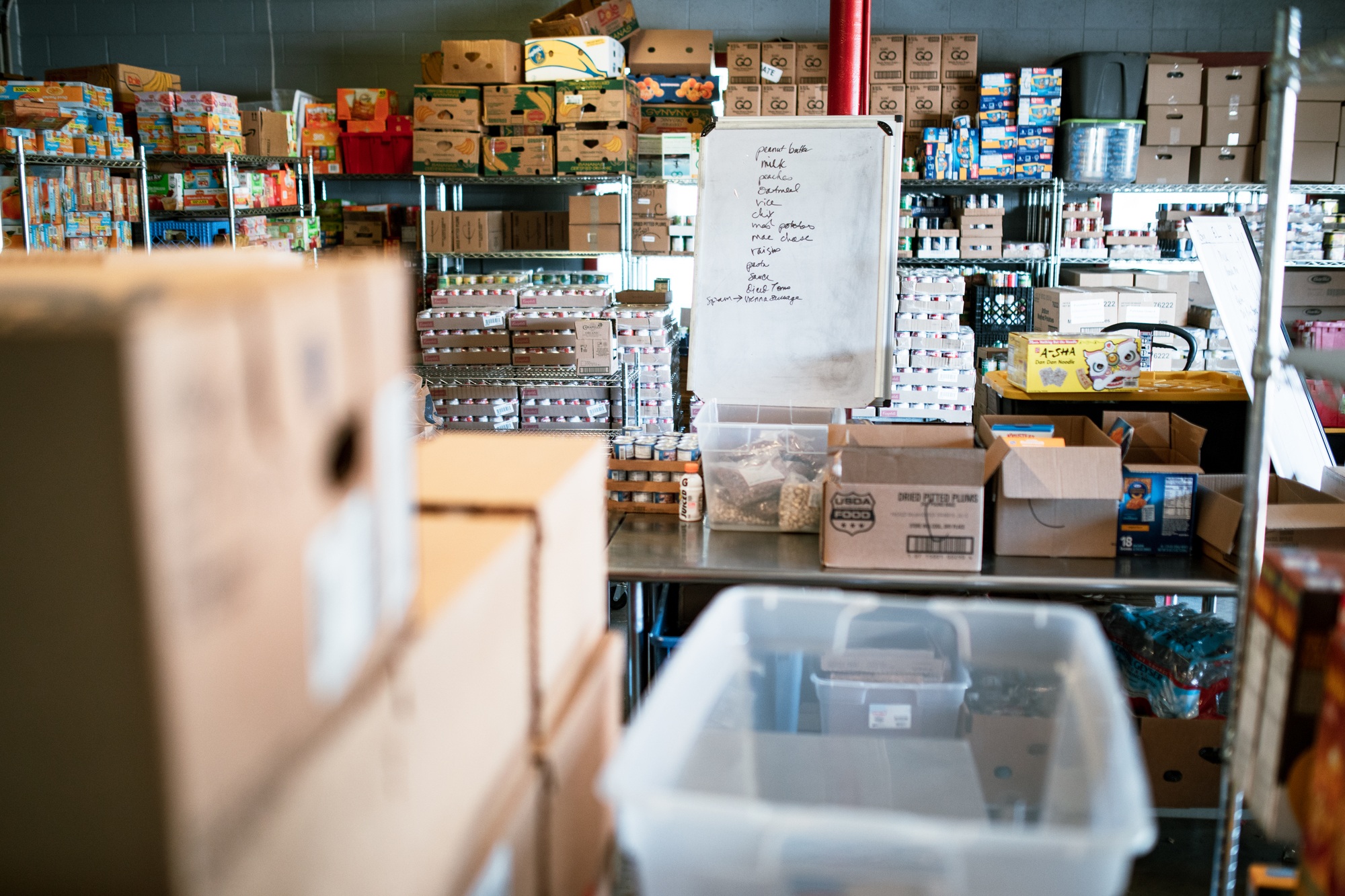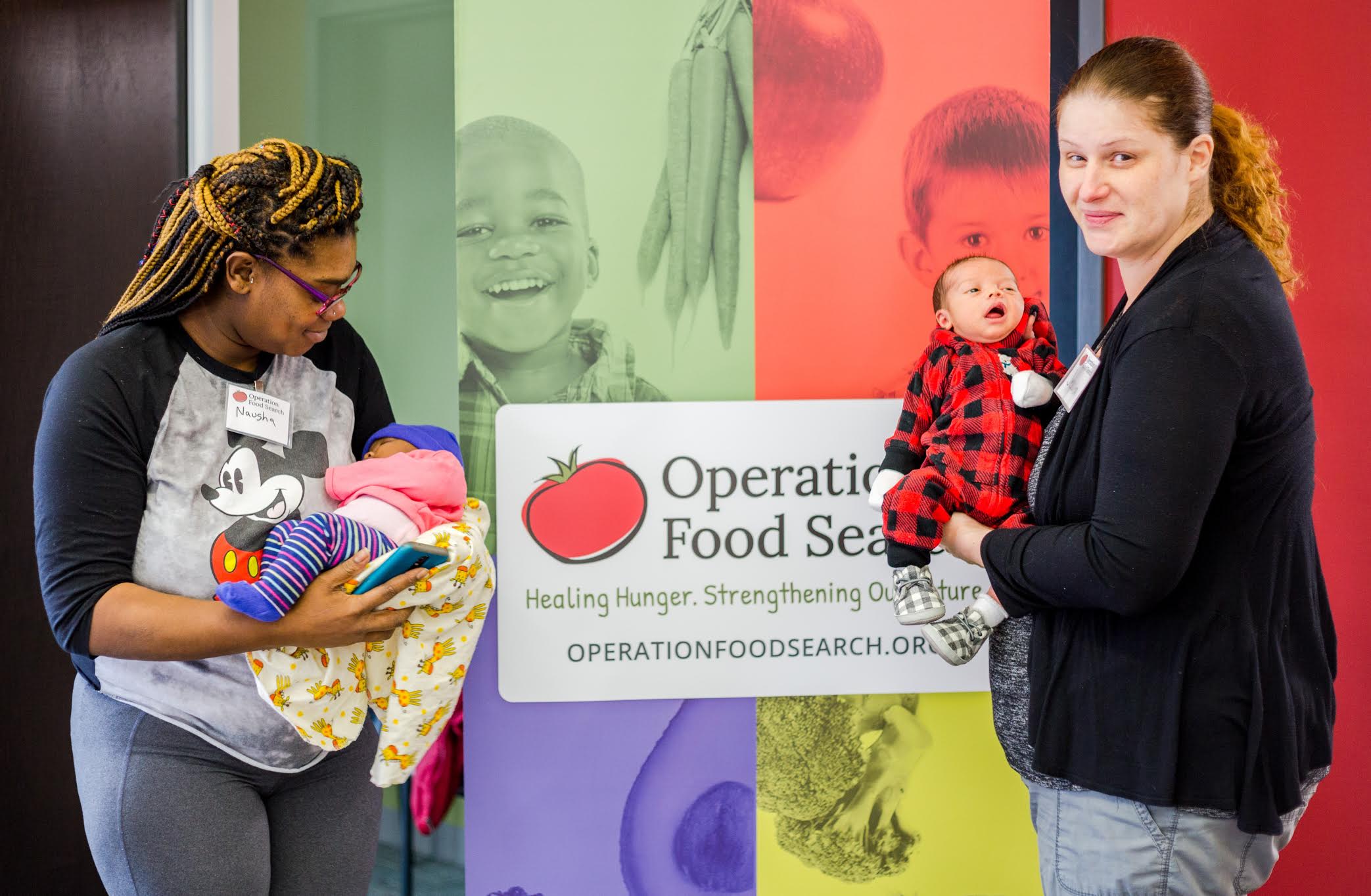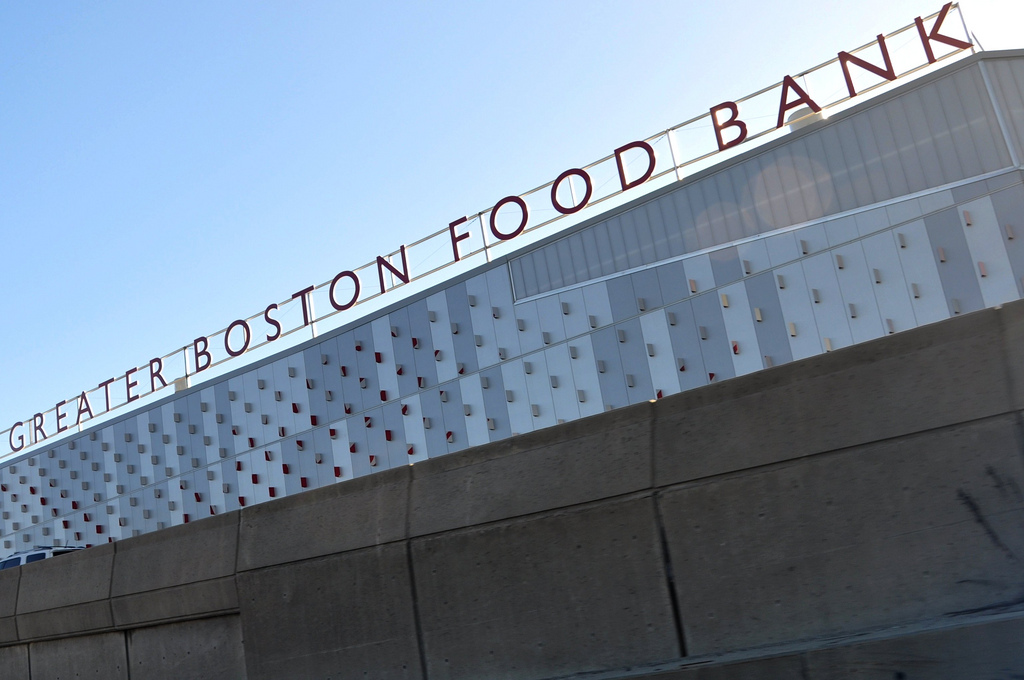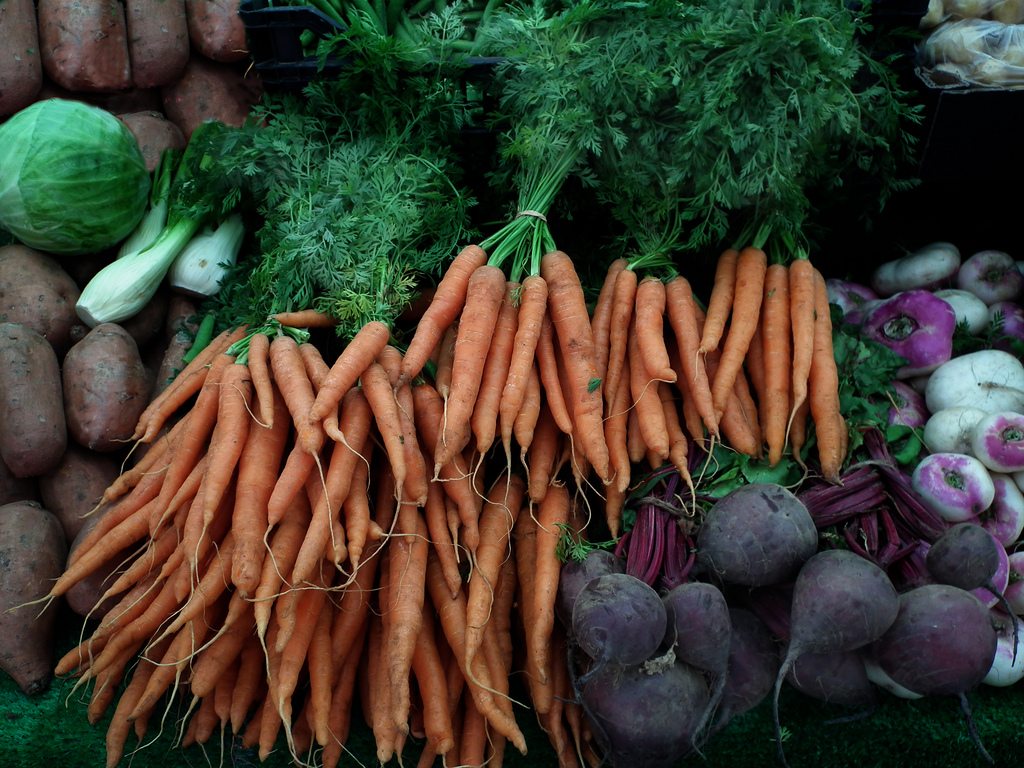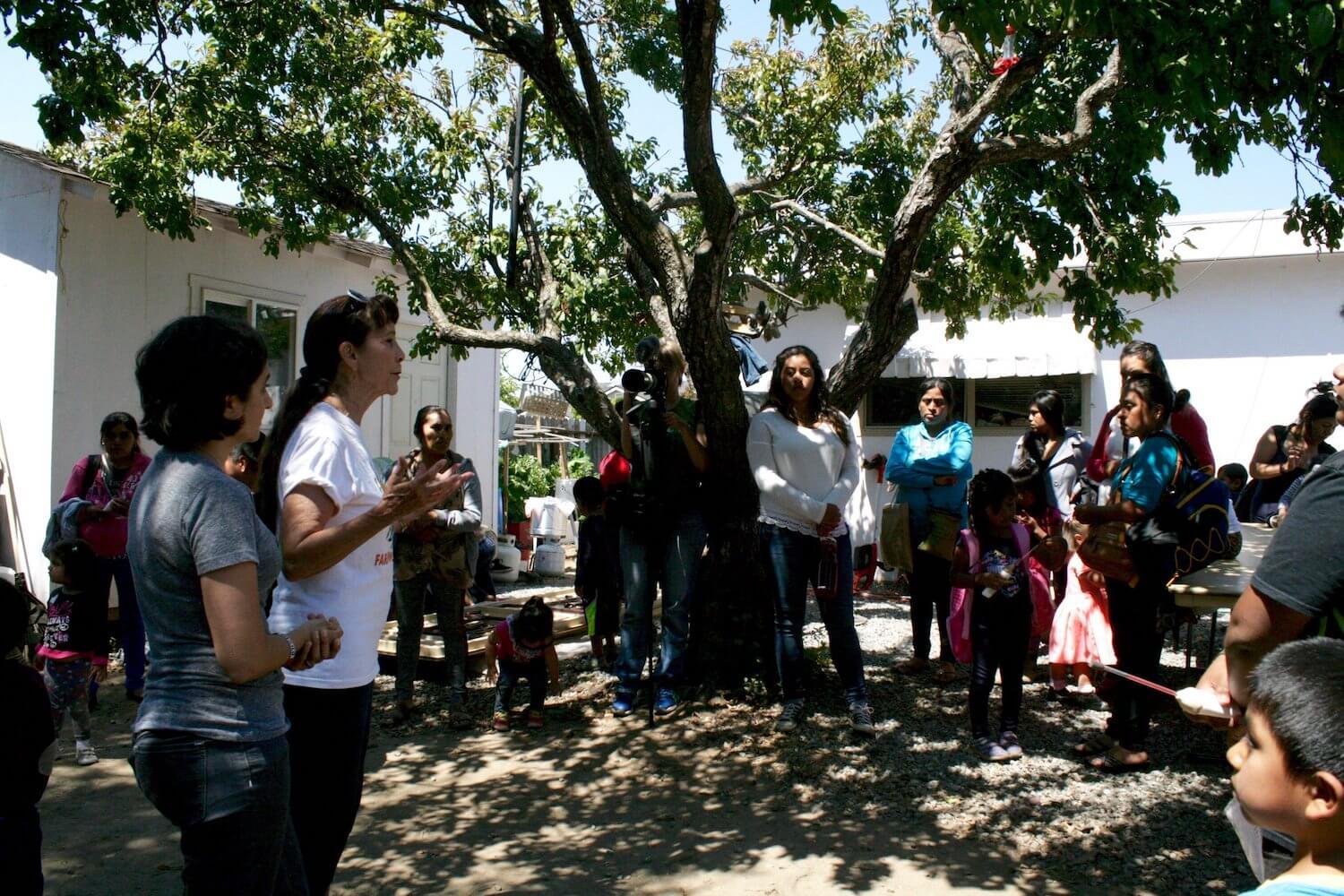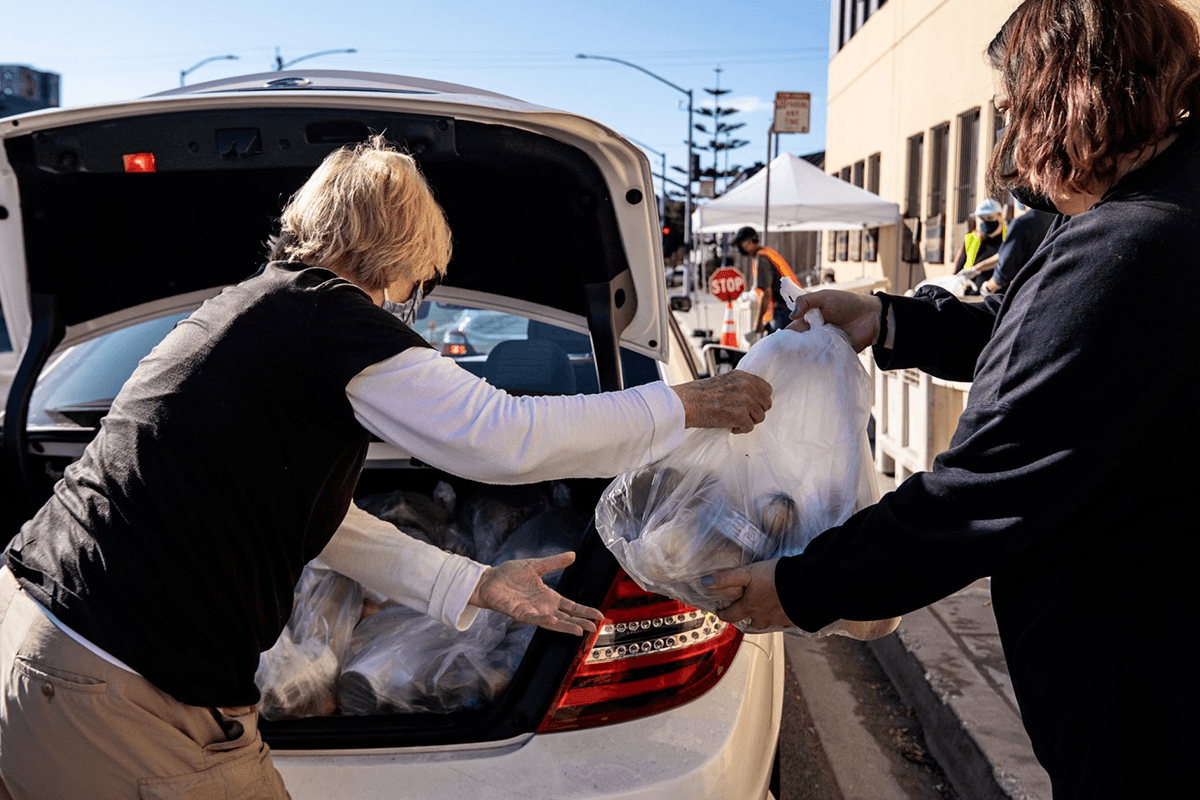
Food Bank News
Food banks shifted their model over the last two years to offer emergency home delivery to vulnerable populations. Can armies of volunteers and a few apps keep the distribution going?
This article is republished from Food Bank News, whose mission is to end hunger by advancing best practices in hunger relief. You can read the original article here.
Home deliveries are among the most labor-intensive, challenging services that a food bank could provide. During the pandemic, many food banks stepped up to the challenge as a way to expand access to food. Now they are working to keep home deliveries going.
Aside from the logistics of managing drivers, mapping routes and sourcing food, there are a myriad of considerations, including how much volunteer help to use, whether to hire private couriers, how much to involve partner agencies, and whether fresh produce can be accommodated.
“That’s what’s so tricky,” said Emily De Maria, Chief Program Officer at Central Texas Food Bank. “There are all these levers. We’re trying to figure out where the sweet spot is for each component.”
The logistics were tough, requiring software to assign drivers and map out routes. Recipients signed themselves up for the service, resulting in a “tremendous amount of error.”
At Yolo Food Bank in Northern California, getting to sustainability has meant running a more targeted program, more efficiently. Yolo, with $18 million of 2020 revenue, followed a typical pathway into home delivery, springing into action at the beginning of the pandemic and soon making as many as 3,000 deliveries a week, said Robert Davis, who headed up the operation as a volunteer and now serves as the food bank’s Impact and Innovation Officer.

Food Bank News
Zane Hatfield of Yolo Food Bank sees a “Silver Tsunami” coming.
The logistics were tough, requiring software to assign drivers and map out routes. Recipients signed themselves up for the service, resulting in a “tremendous amount of error,” Davis said, so the food bank also assigned a team of four to call recipients by phone to clean up address data.
As Yolo has moved to make the program more sustainable, its first modification was to qualify recipients, partly to weed out “young, spry” college students who were using the service to get free food delivered to their dorm rooms, said Zane Hatfield, Director of Programs.
It also identified recipients who were better off traveling to public food distributions where they could enjoy more variety and choice. Now the food bank delivers to about 1,000 qualified households of mostly low-income elderly or mobility-challenged people.
More than half of those households reside at various senior living apartment complexes, where Yolo now makes single consolidated deliveries, resulting in “a big efficiency play,” Hatfield said. For most of the remaining deliveries, two local non-profits and a local organic farm pitch in to execute the “last mile” of deliveries, while Yolo manages intake and registrations.
All of the changes have enabled Yolo to continue delivering to the most vulnerable populations, while preparing for a future that includes an aging population. “The Silver Tsunami is coming,” Hatfield noted.
Yolo Food Bank delivers to about 1,000 qualified households of mostly low-income elderly or mobility-challenged people. More than half of those households reside at various senior living apartment complexes, where Yolo now makes single consolidated deliveries, resulting in “a big efficiency play.”
Central Texas Food Bank, which began home deliveries in earnest over summer 2021, is relying heavily on local partners as it strives for a sustainable program. Its delivery service, which currently goes to about 650 households, revolves around the food bank’s relationship with Austin Public Health and its six Neighborhood Centers.
The centers, which provide access to various public services, do all the casework management for home delivery, screening and enrolling households, De Maria said. Delivery occurs through donated services from Amazon, which recruits, schedules and routes drivers in an agreement expected to last at least through the first quarter of 2022.

Food Bank News
Central Texas Food Bank plans to rely on local partners to sustain home deliveries, said Emily De Maria.
The role of Central Texas, the fourth-largest food bank in the state with $142 million of 2020 revenue, is to source the food, package it and deliver it to one of the centers, which handles distribution. The food bank also provides a trained volunteer on site at the center to help with the three-day-a-week distributions. Eventually, it would like to distribute five days a week and reach 1,800 households a month, De Maria said.
Recognizing that Amazon may not offer its delivery services indefinitely, Central Texas is keeping its eye on the ever-shifting landscape of courier services. “We’re challenged to keep a handle on exactly who is doing what,” De Maria said. One variable-cost model that stands out is a service that helps to recruit volunteer drivers, but switches to paid drivers when necessary, she said.
An element of Central Texas’ program that is expected to last is a reliance on partner agencies. “They are our infrastructure across the 21 counties we serve and we appreciate the strength and expertise of that,” De Maria said.
San Francisco Marin Food Bank, in contrast, is emphasizing direct delivery from its facility in its home delivery program. It began offering home delivery in 2015, initially running the program exclusively through its pantry partners, which recruited the volunteers, bagged the food and delivered it to about 3,000 participants.
A pilot program at San Francisco Marin Food Bank began just before the pandemic, serving about 200 households per week, it ballooned to 9,200 during the pandemic.
As the program developed a waiting list, the food bank sought to increase capacity by also delivering groceries directly from its facility. A pilot program begun just before the pandemic served about 200 households per week, then ballooned to 9,200 during the pandemic, said Seth Harris, Program Manager, Home Delivered Groceries at the food bank, California’s third-largest with $152 million of 2020 revenue.
By operating its own direct service alongside existing pantry partners, the food bank has been able to handle the huge influx of pandemic-related need, as well as eliminate its waiting list. Recently, it also expanded its service to include pregnant women and some parents. “It’s a real joy to allow people to sign up and begin service within seven to ten days,” Harris said.

Food Bank News
San Francisco Marin Food Bank has eliminated its waiting list by delivering groceries directly from its facility, said Seth Harris.
Technology is proving key to keeping up home deliveries. San Francisco Marin, for example, uses routing software and even autonomous driving technology (in training mode). And Harris, who started at the food bank just over a year ago, comes from an e-commerce background.
Since the pandemic, national delivery companies like DoorDash Drive and Amazon Flex have been offering in-kind or deeply subsidized services to food banks, while other companies like Helping Hands Community have sprung up to meet delivery needs through tech-driven services.
DoorDash, which recently commemorated its one-millionth food box delivery, is committed to becoming “core to the way food is distributed,” said Brittany Graunke, who runs the Government and Nonprofit arm of DoorDash Drive. “Our goal is to be doing deliveries with community-based organizations and food pantries where DoorDash operates,” she said. “We’re committed to providing the service, then ensuring that it can be sustainable.”
Hatfield of Yolo Food Bank thinks it’s “totally possible” for food banks to continue offering home delivery services as a standard offering. But it will require them to welcome technology, he said. “You have to embrace being uncomfortable.”

